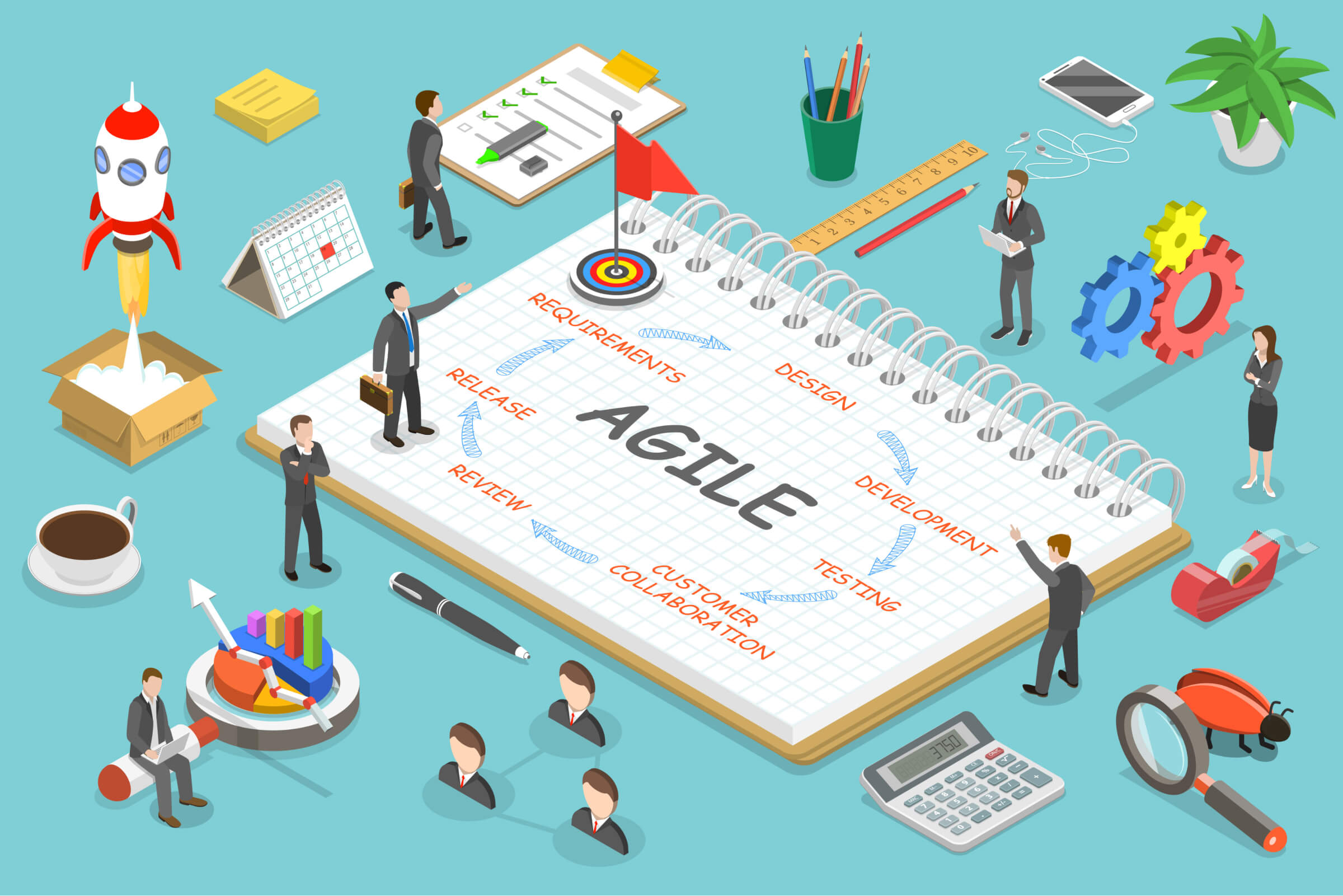
Technology has revolutionized how we communicate, connect, and learn. Among the advances, access to educational opportunities is arguably the most profound. Technology is the foundation of managed learning. It has allowed anyone with the desire and a device to continuously learn from experts in ways that were impossible only a few years ago.
Information constantly changes, which means managed learning development teams need to stay resilient and nimble to keep up with changing technology, learner demands, and content creation. To stay ahead of the game, managed learning technology developers may want to borrow a tool from the IT developers’ project management toolbox: agile methodology.
Agile methodology is a popular project management process among software developers encouraging regular product delivery, teamwork, continuous planning, and continuous learning. This methodology prioritizes flexibility and interactivity among teams to design, develop, test, revise, and support products. Agile product development is never truly complete; products improve through team reviews and cyclical analysis.
Because creating content and improving applications are fluid in managed learning, agile principles in managed learning fit seamlessly and can provide many benefits. The agile process produces on-demand training more quickly and efficiently, allows managed learning teams to act on feedback early and integrate it into future projects, and gives design and development teams a steady plan to work through updates and new projects.
In its true sense, agile methodology can be complicated, but the principles are easy to understand. Managed learning development teams can use the following steps to get started.
Your core team, including designers, developers, and content writers, meets for a vision planning meeting focusing on target users, their unique needs, and the project’s benefits.
The project roadmap includes a general overview of steps in the development process or releases of new material. It should consist of the features that the team will add for each goal and the metrics the team will use to determine the next goal.
Following roadmap planning, the team will plan the release dates for new material or features and the time frame dedicated to each cycle – known in the agile world as sprints. To keep L&D leaders up to date on the status, agile teams create to-dos for each sprint necessary to complete the release.
Your team will track the backlog of features in three categories: to-do, doing, and done. This project management process is called kanban and is an engaging and visual way to track progress for a release.
The last step in the process is the greatest advantage of using agile principles in managed learning: reviewing successes and feedback and integrating them into the next sprint and product release. Included in these reviews are learner feedback and content updates. After review, the process starts again for additional releases.
Advances in managed learning have allowed for education in the palms of our hands through innovative platforms. Agile methodology allows for speed and feedback integration that will provide an exceptional experience for your company and give learners the confidence that they have access to the best information technology can bring.
Could your managed learning programs use an update? Find out how to leverage more opportunities with a program audit.
These Stories on Learning Strategy
As the word echoed in the boardroom, all eyes turned to Klara, the new VP of ...
Quick poll: Raise your hand if you like taking compliance training.
I can’t see you, ...
Imagine a mid-sized consumer packaged goods (CPG) company — let’s call them “FreshBite” — facing a critical challenge: Mid-level managers, many of whom were first-time ...
Copyright © 2025 Ardent Learning Inc. All Rights Reserved.